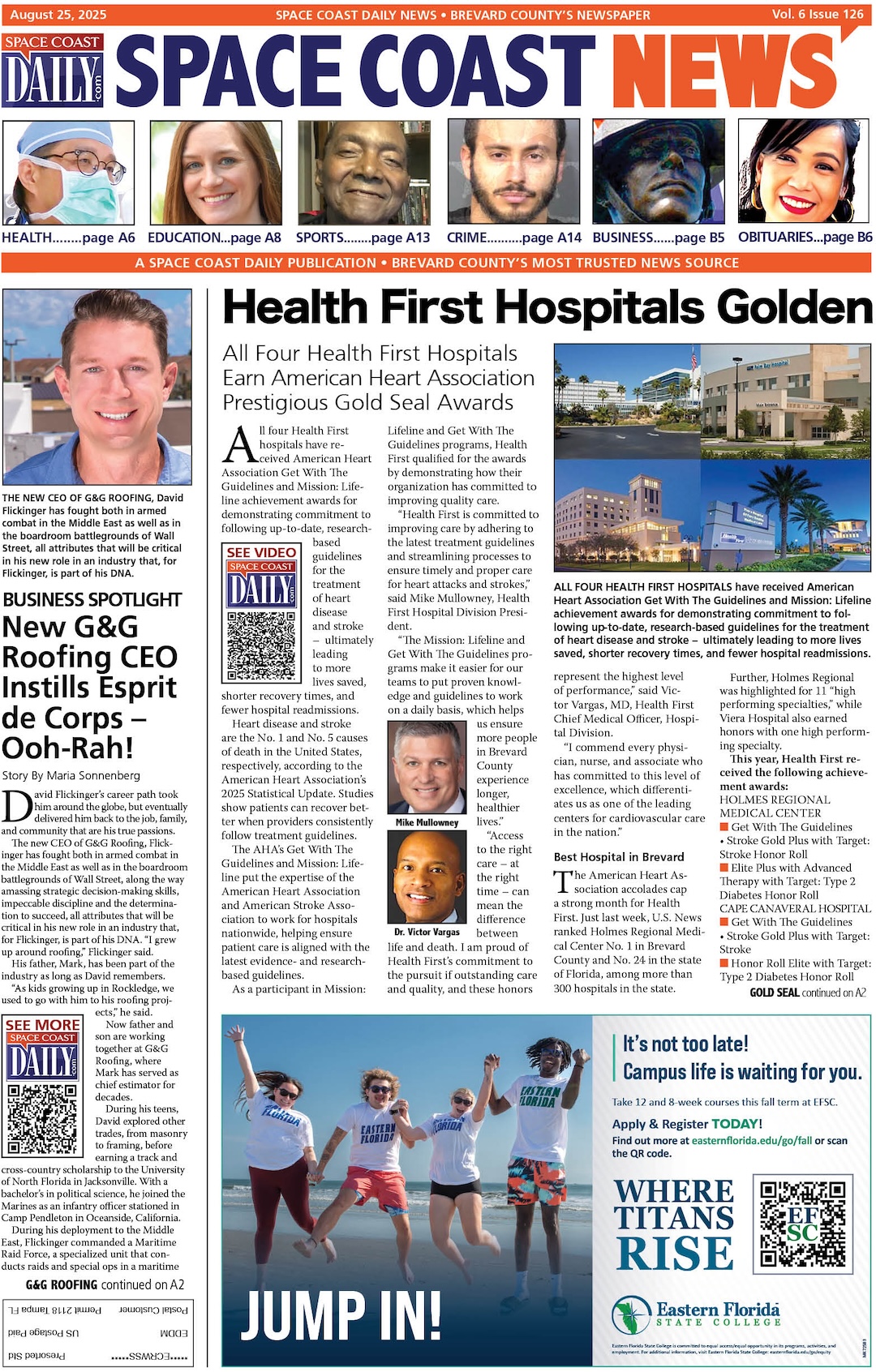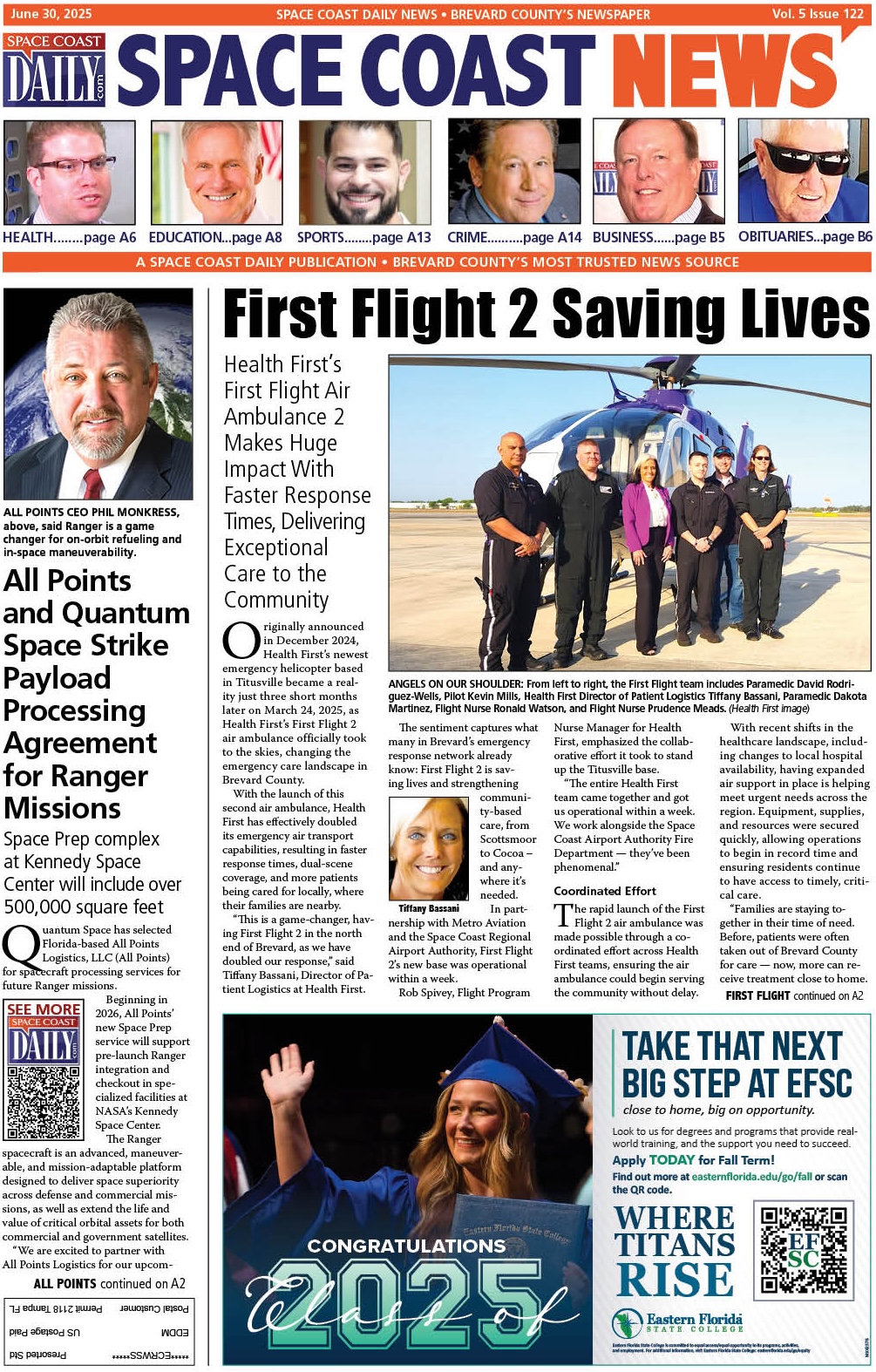IMAP Space Weather Mission Launch Set Sept. 23 from Kennedy Space Center Aboard SpaceX Falcon 9
By Space Coast Daily // September 17, 2025
Watch coverage on Space Coast Daily TV

BREVARD COUNTY • FLORIDA – Liftoff of the IMAP missions on a SpaceX Falcon 9 rocket is targeted for 7:32 a.m., Tuesday, September 23, from Launch Complex 39A at NASA’s Kennedy Space Center in Florida.
Watch coverage on Space Coast Daily TV.
NASA will provide live coverage of prelaunch and launch activities for an observatory designed to study space weather and explore and map the boundaries of our solar neighborhood.
Launching with IMAP, Interstellar Mapping and Acceleration Probe are two rideshare missions. NASA’s Carruthers Geocorona Observatory and the National Oceanic and Atmospheric Administration’s Space Weather Follow On-Lagrange 1 will also be part of the launch, providing insight into space weather and its impacts at Earth and across the solar system.
The IMAP spacecraft will study how the Sun’s energy and particles interact with the heliosphere — an enormous protective bubble of space around our solar system — to enhance our understanding of space weather, cosmic radiation, and their impacts on Earth and human and robotic space explorers.
The spacecraft and its two rideshares will orbit approximately one million miles from Earth, positioned toward the Sun at a location known as Lagrange Point 1.
NASA’s Carruthers Geocorona Observatory is a small satellite that will observe Earth’s outermost atmospheric layer, the exosphere. It will image the faint glow of ultraviolet light from this region, called the geocorona, to understand better how space weather impacts our planet.
The Carruthers mission continues the legacy of the Apollo era, expanding on measurements first taken during Apollo 16.
The SWFO-L1 spacecraft will monitor space weather and detect solar storms in advance, serving as an early warning beacon for potentially disruptive space weather, helping safeguard Earth’s critical infrastructure and technology-dependent industries.
The SWFO-L1 spacecraft is the first NOAA observatory explicitly designed for and fully dedicated to continuous, operational space weather observations.
Media accreditation for in-person coverage of this launch has passed. NASA’s media credentialing policy is available online. For questions about media accreditation, please email: ksc-media-accreditat@mail.nasa.gov.
NASA’s mission coverage is as follows (all times Eastern and subject to change based on real-time operations):
Sunday, Sept. 21
2:30 p.m. – NASA Prelaunch News Conference on New Space Weather Missions
• Nicky Fox, associate administrator, Science Mission Directorate, NASA Headquarters in Washington
• Brad Williams, IMAP program executive, NASA Headquarters
• Irene Parker, deputy assistant administrator for Systems at NOAA’s National Environmental Satellite, Data, and Information Service
• Denton Gibson, launch director, NASA’s Launch Services Program, NASA Kennedy
• Julianna Scheiman, director, NASA Science Missions, SpaceX
• Arlena Moses, launch weather officer, 45th Weather Squadron, U.S. Space Force
Watch the briefing on the agency’s website or NASA’s YouTube channel.
3:45 p.m. – NASA, NOAA Science News Conference on New Space Weather Missions
• Joe Westlake, director, Heliophysics Division, NASA Headquarters
• David McComas, IMAP principal investigator, Princeton University
• Lara Waldrop, Carruthers Geocorona Observatory principal investigator, University of Illinois Urbana-Champaign
• Jamie Favors, director, Space Weather Program, Heliophysics Division, NASA Headquarters
• Clinton Wallace, director, NOAA Space Weather Prediction Center
• James Spann, senior scientist, NOAA Office of Space Weather Observations
Watch the briefing on the agency’s website or NASA’s YouTube channel.
Monday, Sept. 22
11:30 a.m. – In-person media one-on-one interviews with the following:
• Nicky Fox, associate administrator, Science Mission Directorate, NASA Headquarters
• Kieran Hegarty, IMAP project manager, Johns Hopkins University Applied Physics Lab
• Jamie Rankin, IMAP instrument lead for Solar Wind and Pickup Ion, Princeton University
• John Clarke, Carruthers deputy principal investigator, Boston University
• Dimitrios Vassiliadis, SWFO-L1 program scientist, NOAA
• Brent Gordon, deputy director, NOAA Space Weather Prediction Center
Tuesday, Sept. 23
6:40 a.m. – Launch coverage begins. Spanish-language available on NASA’S YouTube channel.
7:32 a.m. – Launch
For more information about these missions, CLICK HERE.













